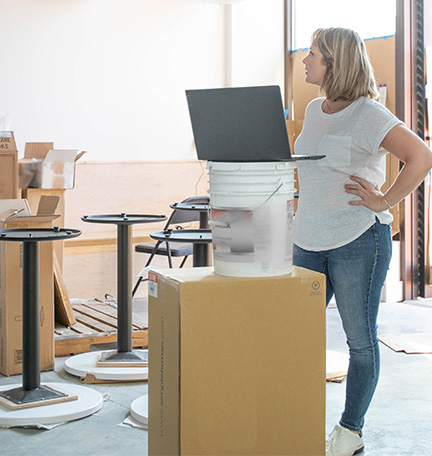Every business needs to prepare for unexpected, potentially crippling disruptions.
Though major natural disasters such as earthquakes and wildfires happen more frequently today than they did a decade ago, you don’t have to be in a disaster-prone area to need a plan to keep your business up and running in an emergency.
“Every business should have their own business continuity plan,” says Christian White, commercial banking regional executive at Regions Bank. Business disruptions come in all shapes and sizes, from isolated accidents to large-scale disasters. A random unexpected incident could cause a financial setback or leave a business crippled or even worse.
Preparing for your area’s likeliest disasters, as well as the unexpected, starts with basics you can continually build on including evacuation, shelter-in-place and remote work plans. But although safety is your top priority, it’s just one part of the plan.
Here’s how to create a strategy that will address your business’s unique needs.
Assess how threats could hinder operations
Identify your greatest risks and your critical business functions. A disaster preparation checklist can help. While losses related to long-term shutdowns might be obvious, also consider the risks that come with short-term interruptions—even those that last for only one day. “A customer might wonder how well-run the business is if they can’t figure out how to operate even in the short term when they’ve been hit,” says White. “This is yet another reason why a continuity plan is important for all businesses.”
Next, determine the resources you need to restore those functions if a disaster strikes. Resources generally fall within four broad categories:
- Systems—the procedures that keep your business running
- Space—the physical location(s) of the company
- Staff—your employees
- Supplies (or “stuff”)—your equipment and other business possessions
The nature of your business will determine the specifics of your plan. For example, “there are certain businesses that can pivot to a remote work environment, but there are a lot of businesses that require their employees to be on site,” White says.
Establish a communication plan
A sound continuity plan will feature communication protocols throughout an emergency, even if the power goes out. “The important part is making sure that companies and associates are organized and know how to communicate and by what method when an event occurs,” White says. For example, an email alert system or automated text messages can keep employees and stakeholders informed. Leverage social media to provide updates and let the public know you’re open for business or when you expect to be.
Review your insurance coverage
Make sure you are adequately insured against potential risks in your area. Think about the physical aspects of your business, along with equipment and vehicles. Also, ask about your policy’s business interruption coverage, which compensates you for lost income and covers some operating expenses if a disaster forces a temporary shutdown. Consider adding extra expense coverage, which reimburses you for money spent to avoid a shutdown during restoration.
Check in with suppliers
Ask suppliers if they have their own recovery plans in place because a disaster that befalls them could end up harming you. “For many companies, their supply chains are the lifeblood of their business,” White says. He suggests asking key vendors the following questions: Is there a plan in place? Who is responsible for the plan? What kind of disasters are you prepared to handle? “I would also want to know how they performed in recent natural disasters,” White adds.
Test your plan
Conduct annual “tabletop tests” to ensure your plan works and stays up to date. Write an after-action report to evaluate outcomes and improve your plan accordingly. “Companies will never know if their plan works if they don’t test it,” White says, “and you don’t want to have to wait for a disaster to happen to figure out if your continuity plan works.”
Small businesses stand to lose more than just revenue if a disaster catches them off guard. “If a disaster shuts down a business for a period of time, the impacts could be significant, involving financial issues, reputational issues and even the existence of the business,” White says.
Three things to do:
- Find a banker to help you develop your business continuity plan.
- Learn about potential threats to your business at Regions’ Disaster Resource Center.
- If the worst happens and disaster strikes, discover what to do next.











